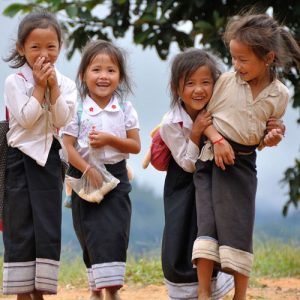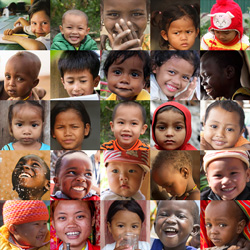A strong earthquake that struck Myanmar on 11 November has left thousands of children and families without homes, schools and businesses. The 6.8-magnitude quake has affected over a dozen areas, of which Shwebo district in Sagaing region is reported to be among the worst hit.
ChildFund has recently started working in Myanmar and will be assisting children and families in Shwebo district through a local partner. More than 10,000 people in this area have been affected by the earthquake.
“The main aim of our response is to enable children in Shwebo district to continue their education while their schools are being rebuilt, and to provide emergency food rations to families,” says ChildFund’s Mandalay program coordinator, Thiha Sane.
“ChildFund will support our local partner to set up temporary ”tent schools’ and provide school supplies and books for the children. Many families have lost their businesses too, so we will distribute daily food rations to affected families for one month.”
ChildFund is in the process of setting up an office in Myanmar (formerly known as Burma), which is experiencing significant change since the military relinquished power to a newly elected government last year. Initially, ChildFund will be working through local partners, providing funding and technical support to projects in line with our child-centred development focus.
“We’ll be working in Yangon and Mandalay at the start – these are big cities with some sub-urban slum areas – and also in Shwebo, a more rural district,” explains ChildFund’s Myanmar program coordinator Win May Htway. “We are assessing different partners we can work with and doing child protection workshops with them, so that they have their child protection policy in place when they start working with us.”
Political isolation has left Myanmar the poorest country in South-East Asia, with almost a third of its population estimated to be living in poverty. In 2011 it ranked 149th out of 187 states in the Human Development Index, lagging behind all of its ASEAN neighbours in indicators for poverty, health and education.
For the country’s 18 million children, the challenges are immense. Despite recent increases in government spending on healthcare and education, most villages lack basic healthcare and only half of all children complete primary school. Acute malnutrition is a serious concern with 40 per cent of children suffering from stunting and 10 per cent affected by wasting. One in 10 children in Myanmar dies before their fifth birthday.
ChildFund Australia CEO Nigel Spence says: “While it is devastating to see the level of poverty for children in Myanmar, it is encouraging to see the country opening up and creating new opportunities for its people. By improving education and healthcare, we can make significant strides in bettering the lives of Myanmar’s most vulnerable children and families. ChildFund looks forward to working with our local partners and the government to achieve this.
“We would also like to thank our Project Humanity partners whose ongoing support enables us to respond quickly to emergencies like the earthquake in Myanmar. It is thanks to your wonderful generosity that we can assist children and families in their time of need. Others who wish to support our work in Myanmar can make a donation, although we are not able to offer child sponsorship at this time.”
Join Project Humanity to help communities in times of crisis here.
Photo: Children and families in Shwebo district are living in tents while their homes, schools and businesses are rebuilt.









